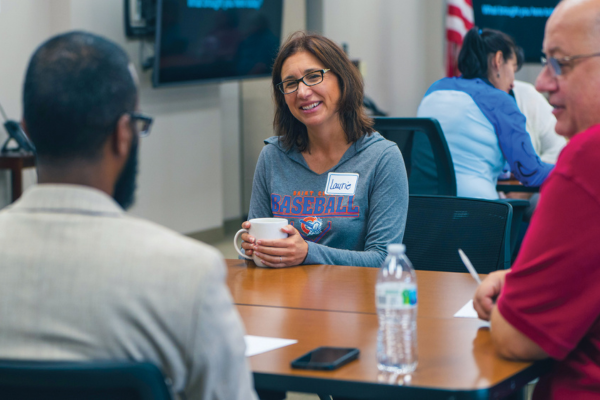The Reality of Unconscious Racial Bias
February 01, 2020
The admittedly uncomfortable and sometimes tense task of navigating behavioral and attitudinal change in schools

What is the biggest barrier to anti-racism work in schools and districts?
When we posed this question recently to a group of education leaders working on anti-racist practices, one man raised his hand immediately. “The need to keep white
people comfortable,” he said. Other leaders in the audience nodded in agreement.
His answer holds true for many school and district leaders. In fact, when the two of us worked as school principals, we each made decisions based on
the need to keep white people comfortable. Leaders seeking to address racism in their schools must ultimately come to terms with this deeply ingrained phenomenon.
Like many leaders, we found ourselves committed to addressing racial inequalities
in our respective schools in two small urban districts. Like many school leaders, we found ourselves devising strategies for how to do this work in a way that would not cause white people to get defensive, shut down and tune out.
This Content is Exclusive to Members
AASA Member? Login to Access the Full Resource
Not a Member? Join Now | Learn More About Membership
About the Authors
Sarah Fiarman works with schools, districts, and nonprofits as a leadership consultant.
Tracey Benson is assistant professor of educational leadership at the University of North Carolina at Charlotte.
They are co-authors of Unconscious Bias in Schools: A Developmental Approach to Exploring Race and Racism (Harvard Education Press, 2019).
Additional Resources
Co-authors Sarah Fiarman and Tracey Benson suggested these informational items related to their article.
ARTICLE/BOOKS
- Biased: Uncovering the Hidden Prejudice That Shapes What We See, Think, and Doby Jennifer Eberhardt. This book explains the research behind our unconscious racial biases and includes compelling examples from the author’s personal experience and professional work.
- So You Want to Talk About Raceby Ijeoma Oluo. A collection of short essays with clear responses to common questions about race, such as “I just got called racist, what do I do now?”
- Unconscious Bias in Schools: A Developmental Approach to Exploring Race and Racismby Tracey A. Benson and Sarah Fiarman. An in-depth discussion of these ideas with many relevant examples.
ONLINE/VIDEOS
- Harvard Project Implicit, a free, interactive site offering a variety of short, online tests that assess unconscious biases.
- How I Learned to Stop Worrying and Love Discussing Race,” a TEDx Talk by Jay Smooth. With humor, the presenter explains common pitfalls and fears in talking about race and offers suggestions for how to normalize these conversations.
- The Seeing White documentary podcast series explores white racial identity and explores what it means to be white in the United States today.
- 26 Mini-Films for Exploring Race, Bias and Identity With Students. In 2017, The New York Times curated a collection of very brief films exploring race, bias and identity through interviews with people of different races. The collection was designed for use with students but is just as informative for adult viewers.
- Unconscious Bias in Schools: Q&A with Sarah Fiarman and Tracey Benson,” an interview by Jill Anderson for Harvard EdCast. Strategies for educators to counter their own unconscious biases in schools and classrooms. (Nov. 20, 2019).
Advertisement
Advertisement
Advertisement
Advertisement



